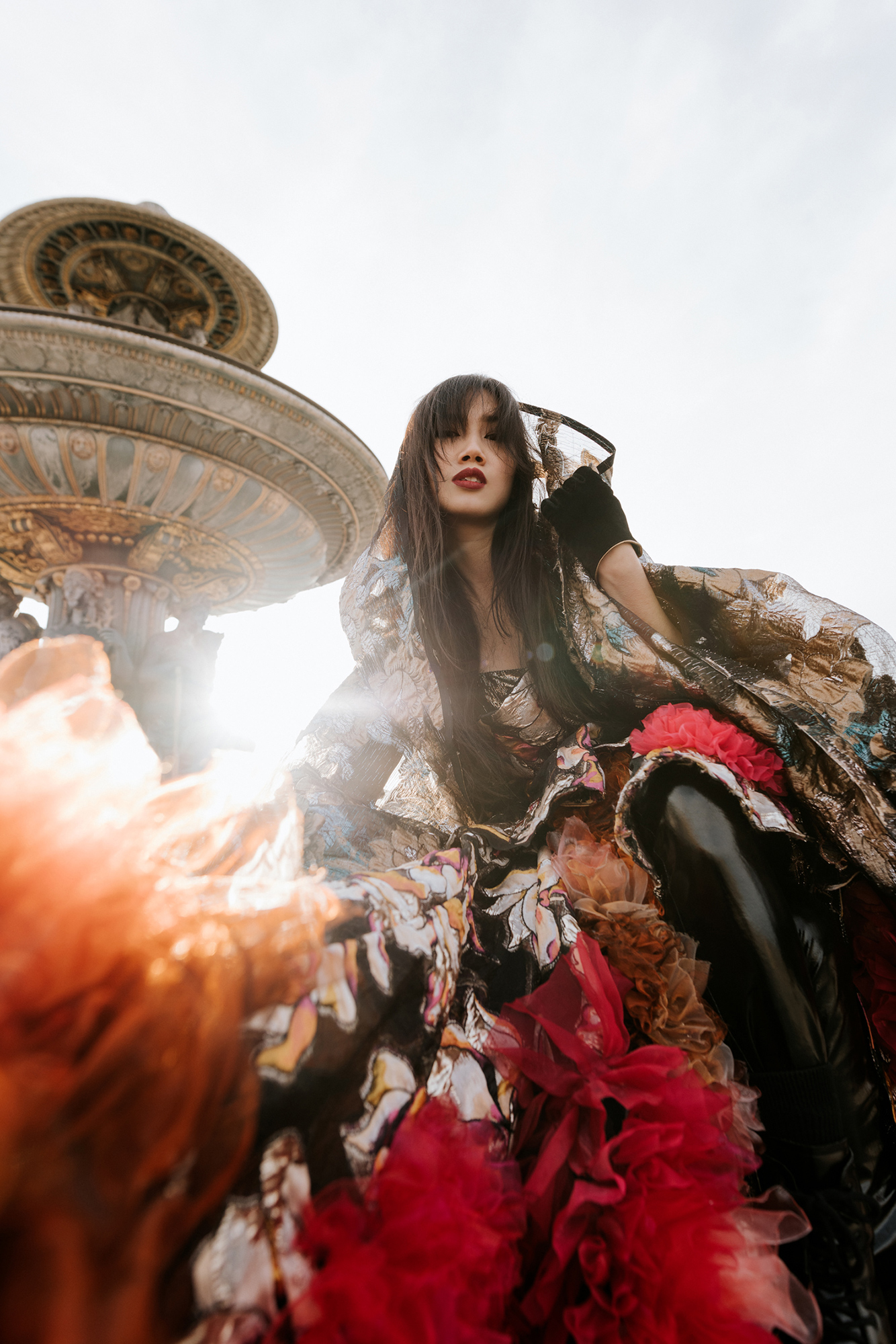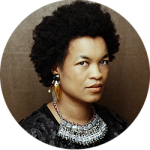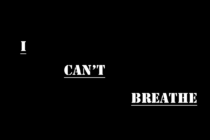by ANDREA DAVIS KRONLUND
all photos EMMA GRANN
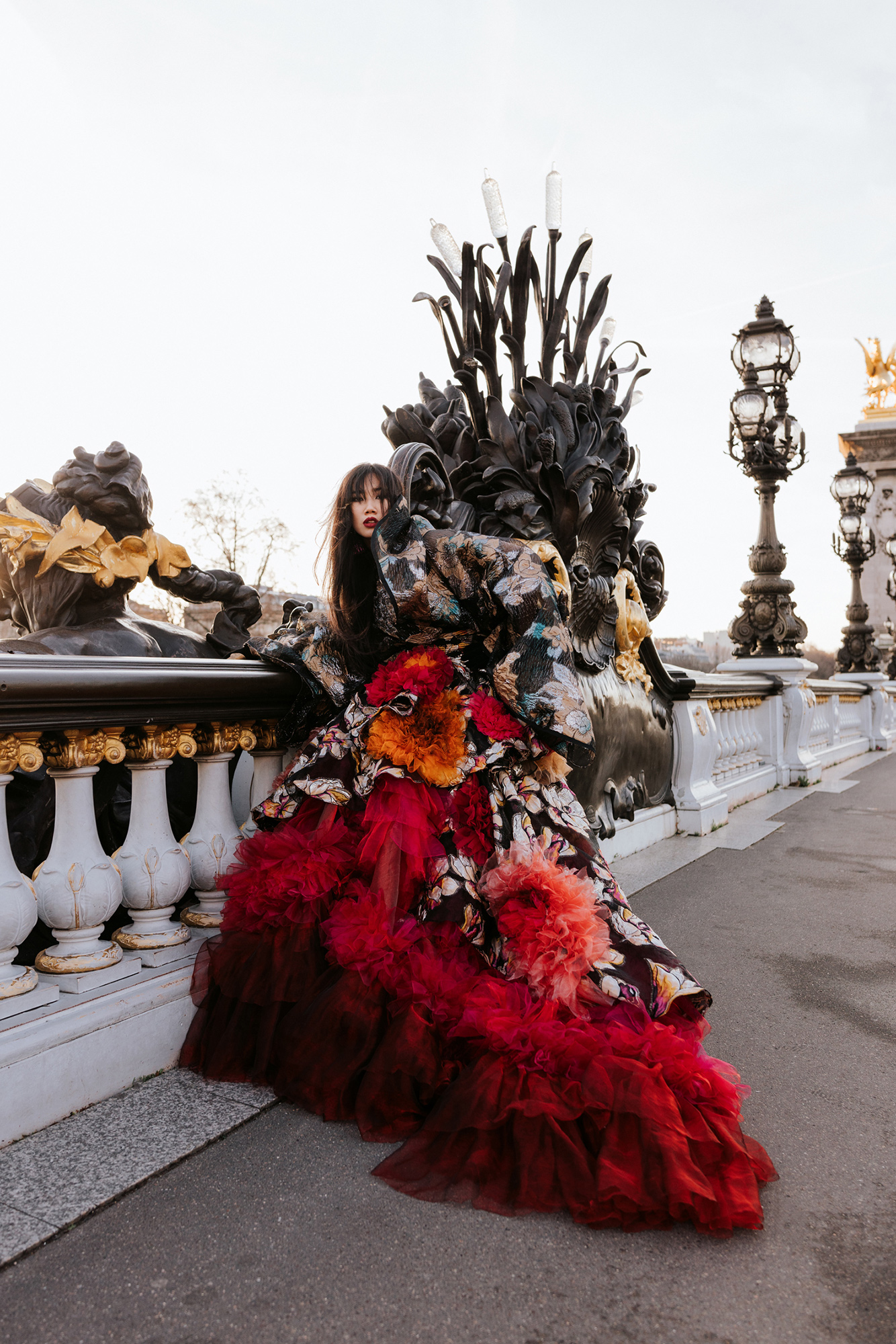
Krull loves fashion. But we’ve always looked askance at the general business model that got us all hooked on fast fashion. In our own way, we return to our roots and forgo seasons, re-use items and choose style over fashion by utilizing a lot of secondhand in our shoots and our personal appearance. Louise Xin has us convinced there’s an even better way.
Louise Xin was born in China and grew up in Sweden. Krull first caught sight of Louise through her street style in front of the venue at Stockholm Fashion Week AW18. Then we fell in love with her designs and engagement in finding real solutions for sustainability for her brand. She turned her love of fashion into activism by highlighting where our clothes come from and how to re-assess our mindset in a business where the glossy veneer often masks the exploitation and destruction behind it. In addition, Louise uses her brand as a platform for human rights issues – questioning greenwashing, labor practices, and the distribution of funds. One of our most popular stories is the one Louise did in 2020 in collaboration with influencer Naima Osman, collecting the experiences of ten hijab-wearing women living in Sweden.
Louise Xin Couture is a rental-only brand primarily using up-cycled and repurposed material. Her debut collection in the fall of 2020 called attention to the plight of the Uyghurs who’ve been relegated to de facto labor camps in Xinjiang, China, where they are forced into factories making many of the items in our homes and on our bodies, including hair products we use in braiding and weaving.
In 2022, the European Parliament selected Louise as a Sakharov Fellow for her human rights work in the fashion industry. I recently got to catch up with the human and labor rights defender to see how she was doing and what was next for her.
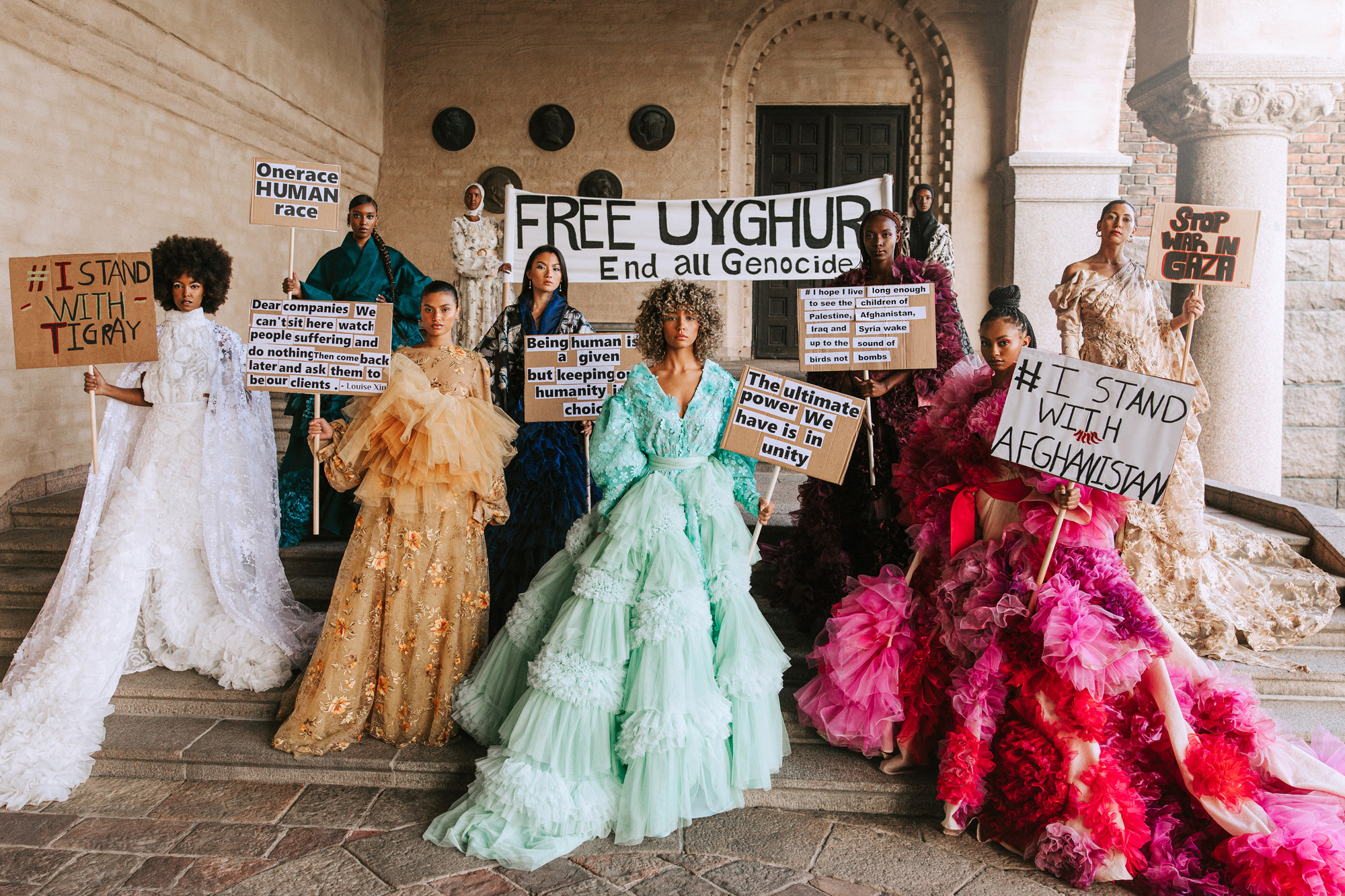
A Change of Scenery
You moved to Paris. Fantastic. How is it there?
I really do feel at home here. It’s a very good neighborhood. Very close a huge African, Chinese, and Arabic community. It’s very diverse, and I can be much more creative here than in Sweden. So I’m very happy just learning and getting inspired.
I’ve been meaning to write about fashion from a local designer’s perspective. But unfortunately, there are few designers of color here in Sweden. I’ve always loved your stuff, so you’re a perfect place to start, even if you’ve now moved to Paris.
Louise apologizes for the French bureaucracy temporarily preventing her from getting an internet subscription. So, we go old-school and chat over the phone.
I remember that bureaucracy from living there for a couple of years. But I love Paris.
Before We Get Started
Brilliant. I want to start with your background.
Before I start, I would love to say thank you because you remember, like three years ago now, that article you published with Naima? That was the first publication where I was allowed to raise awareness about what I’m doing today. I’ll never forget that because no magazine, television, or radio wanted to let me talk about the issue. Krull magazine was the only one…the first one, who was generous and real from the start. So I always remember that. Thank you for that. And I will never forget that.
Oh, thank you. Part of our aim is to raise issues like that. We know many mainstream outlets don’t want anything controversial under the guise of pretending to be positive. Especially when it comes to fashion. So we’re glad when the issues arise…however they emerge.
I see it so clearly now when many publications write about my work. But you know, I reached out to them a long time before. I’ve been doing this for a few years. Now that everybody’s seeing this, they also want to jump on the trend. But this is not a trend. Human rights is not a trend. People are suffering even after the media cools down.
Exactly. Like we always say at Krull… we’re still Black tomorrow. So, if we start the conversation, we want to be sure we’re pushing barriers, opening doors, and creating continuity even after the trend has subsided. So I’m happy to hear that.
You’ve always been doing amazing work, and I’m so sad I haven’t met you for real, but Emma (photographer) told me so much good things about you. One day, we’ll meet in reality. So, please reach out if you’re here in Paris.
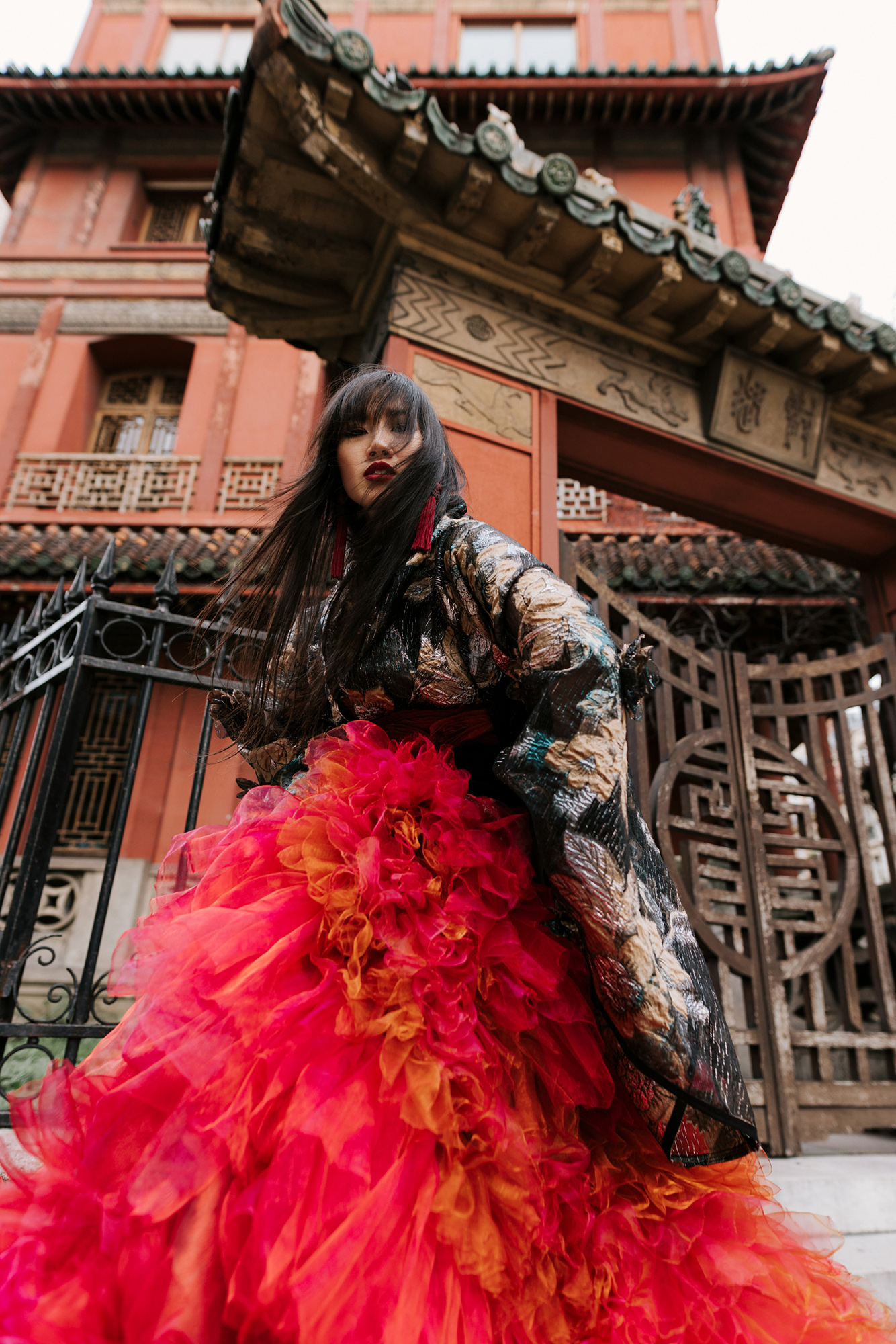
From Shopaholic to Sustainability
Tell me a little about your background from your perspective, different from what people google.
I moved to Sweden when I was a kid. I’ve always been creative because I was born into a creative family. My Dad is a painter. I started to paint before I could write or even read. I was seeing the world through the lens of art. Coming to Sweden, I didn’t know what I wanted to do when I grew up. I tried a bunch of different things, and nothing felt right. Finally, at the end of 2019, I decided to quit my full-time job as a sales assistant at Prada and go fully into becoming a fashion designer. Then came the pandemic.
So did you study fashion? Was part of your creative background in art or fashion design?
I studied art in high school. But I stopped painting because I felt I couldn’t handle being put in a box. And I also felt like it was just too abstract for me. My fellow classmates were amazing and had their super cool sides, but for me, I didn’t find my own thing. I went to many exhibitions but didn’t understand what made works sell. Yeah. So I’m like, I love art, but I’m not good at it.
I started to love fashion when I was a teenager. Creating an alternate persona with just a piece of cloth was cool. And it was so cheap as well. I lived very close to H&M and was buying things from sales. I eventually became a shopaholic, buying new stuff almost daily. And I didn’t understand then how toxic the whole overconsumption behavior was. I also didn’t understand that my need to shop and create this alternative person was because I was so lacking inside.
So, as I grew as a human being, that made me change course in my life and become this person who now is fighting against the whole overconsumption, overproduction, and forced labor within the fashion system because I needed to live through and experience it myself to understand that we are victims of this business model. And this industry set up not only the people working in the labor camps and the people working in miserable conditions but also us from the other side.
We don’t really see the beauty of fashion anymore. We don’t see the beauty of relationships and love and friendship. It’s all about what’s on the outside when you love fashion. So, we must understand that overconsumption behavior is not fashion. That has nothing to do with fashion or style. It’s just a very unsustainable way of living. And I had to learn that by working on myself and becoming another person than I was when I grew up.
How did you turn that into a sustainable model for design for your brand?
When I started my brand, we were in the middle of the pandemic, and I was stuck in Japan. It was when many people woke up and realized how we do business and live our lives is not sustainable. Business as usual is not working.
And I always thought, you know, it drives me so crazy that people are wearing a dress for a gala, and then it just sits in a wardrobe, and they will never wear it again. It doesn’t make sense.
At the same time, I’d just discovered haute couture. I didn’t even know what that was before… literally! I was just like, Oh, so cool. Big dresses! I had to learn what couture means, handcraft, and all that. And then I realized that couture was what we had before mass production. Before ready-to-wear, everything was handmade. All cultures have a rich, fantastic history and a tradition of textiles that they’ve had for thousands of years. We have that in Asia, like the beautiful embroidery in Chinese and Japanese culture. We have that in Africa in amazing handcrafted prints. We don’t see them anymore because they have been washed away and replaced with these mass-produced objects. We remove the beauty of what fashion actually is.
And that’s something I wanted to bring back by showing the other parts of what textiles and fashion can do for people and society. Because fashion, for me, is an art form, and art is a reflection of society. That may be why we have fast fashion because it matches our mentality. Like when a relationship gets broken, we don’t repair it. We throw it away. And we do the same thing with our clothes. That reflects the way we behave and our values.
What did you do with all the fast fashion stuff from when you were a shopaholic?
I gave away a lot of it, but some were of such bad quality that, unfortunately, I had to throw them away. But I kept a large part, and I’m remaking them and trying to find a way to start producing ready-to-wear, everyday pieces from upcycled, already existing garments – renewing them into different styles.
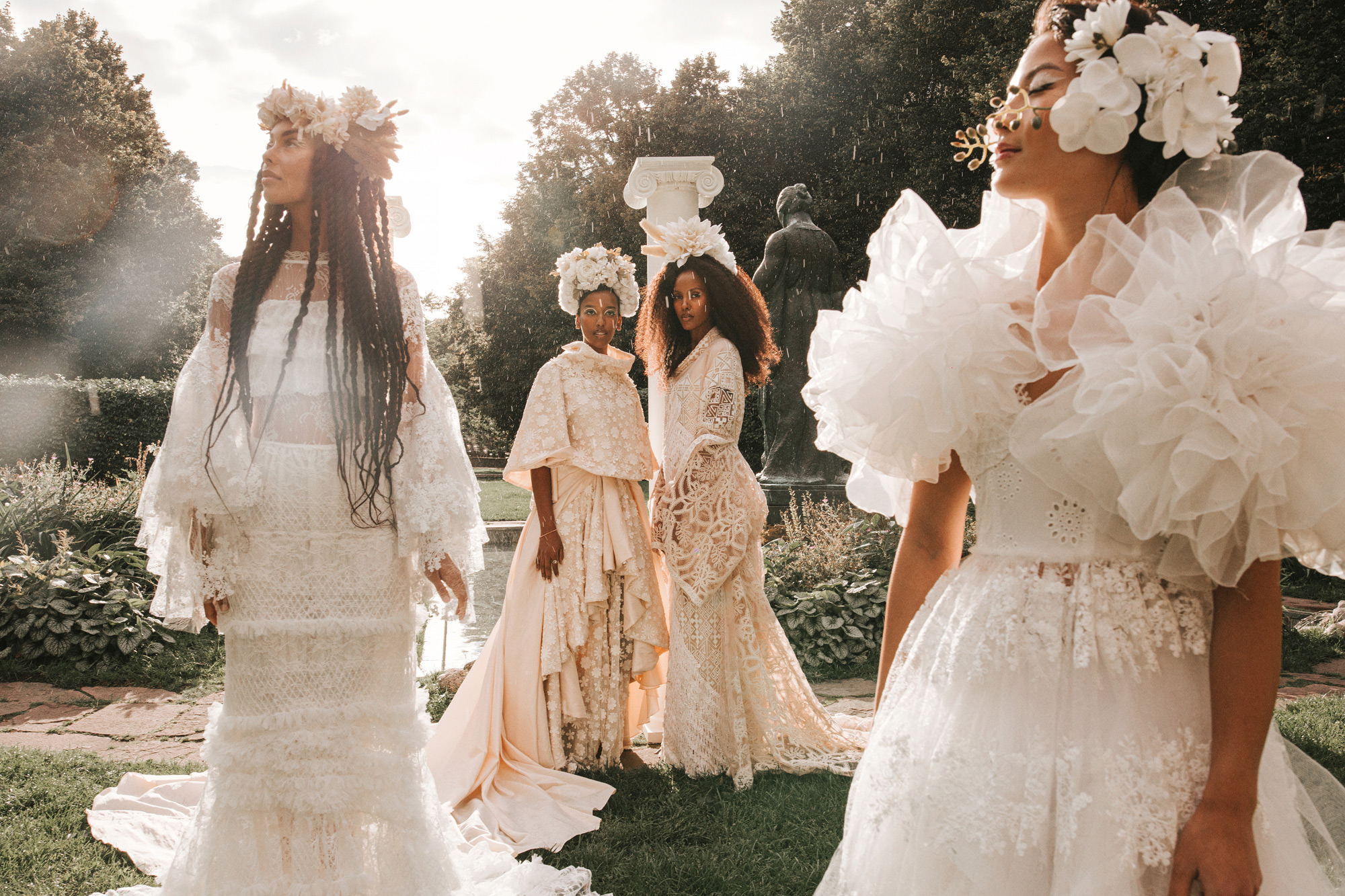
A Sound Of Music Moment
You’ve used a lot of tulle in your collections before. Why that material?
They’re actually not tulle. They’re organza.
It’s a funny story. When I first started, I came in contact with this amazing woman. Her name is Thintin Strandman. She founded TJEJZONEN in Stockholm, which creates a safe space for young women. And she started secondhand concept stores that provide creative therapy to people struggling with different issues. They do job training and remake and sell stuff in the secondhand store Butik ReUnik in Täby. So when I went there, I saw a big pile of curtains. They were in magenta and shades of purple and struck me as really beautiful.
So I made my first-ever rental-only dress from those fabrics. And I just love using that material. It’s romantic and dramatic in a way. Also, most of the secondhand fabrics I could find at that time were curtains. Big pieces, because I need a lot of material to make one dress, and there are never enough pieces of other garments like jackets and dresses. Never enough lengths. With curtains, if I was lucky enough to find a quantity like that, I could make a whole dress out of four or five lengths of curtains. So that’s how I started with the organza.
And are you continuing with organza? Is that becoming your signature, or have you found other fabrics?
I do love it. I’ve started to create flowers using those organza curtains, so it’s definitely become a signature. Then I was in Congo last year, and I fell in love with the prints there, and bought some fabric from the local market and started to create some pieces with that. So I want to introduce different traditional textiles. But, one important thing for me is that, unfortunately, many fashion brands also exploit that part, like not respecting intellectual property and giving the communities their credit. So if I’m doing projects like that, I want the money to go back to those communities so they can continue producing those beautiful textiles. I also want to educate people about origins and provenance, like what comes from what region or culture. So that people also get to learn a piece of history while renting my dresses.
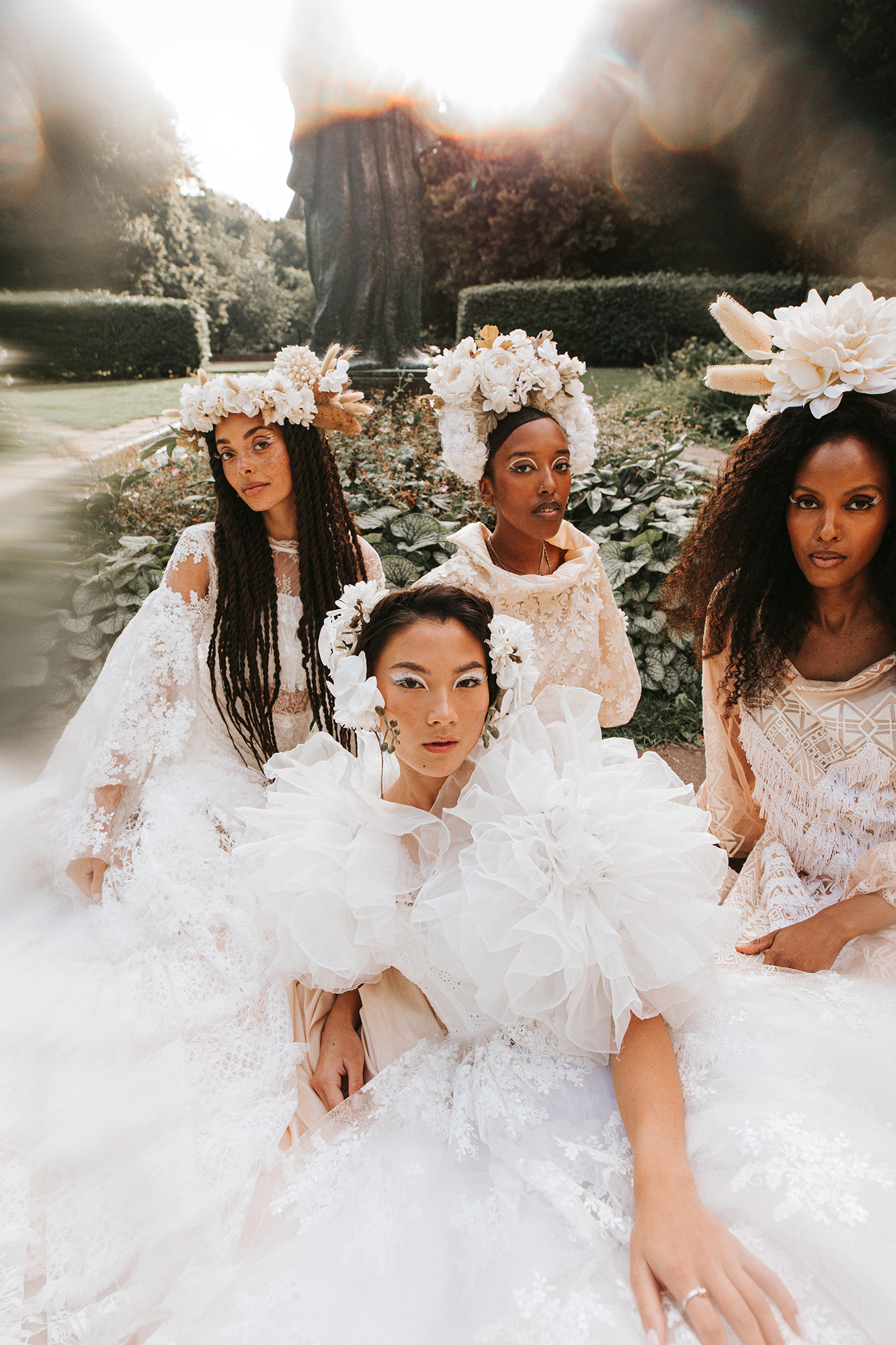
Cultural Mash-Up
You have your Chinese and Swedish cultures, having been to Congo, and now you’re in the French culture. How did these different cultures influence your design?
They influence a lot. Everything I do. There are a few things that inspire me. One is nature. Doing what I’m doing, the only place I find real is nature. So I go hiking and am in the woods as much as possible because it gives me peace of mind and time to think.
Traveling opens my mind, educates me, and makes me a better person by interacting with people with different cultures, values, and the way they do things. So that definitely taught me a lot. And growing up, I always felt like I didn’t fit in because I was Chinese and living in Sweden. So it doesn’t matter how well I speak Swedish, I will never truly fit in. And I struggled a lot with that when I was younger. But now, I see that as my greatest privilege because I see myself becoming a bridge between different cultures and ethnicities.
I love interacting with people from different backgrounds, ages, political views, or whatever because that gives a much fuller picture of how the world works. Which is very important in a society like today, where we are so polarized. You’re either this or that. Or you’re into this or into that. And at the end of the day, we are humans, and it’s beautiful that we are so different and think so differently. Of course, you can never agree with everybody, but being open-minded and listening to someone else’s story and their view of the world would greatly benefit you.
That reflects in my designs too. I have been fortunate to have people from different backgrounds as models. Without them, I wouldn’t have learned about the Tigray genocide, for example, or what’s happening in Afghanistan or Palestine. They could educate me so I could bring their struggle into my work.
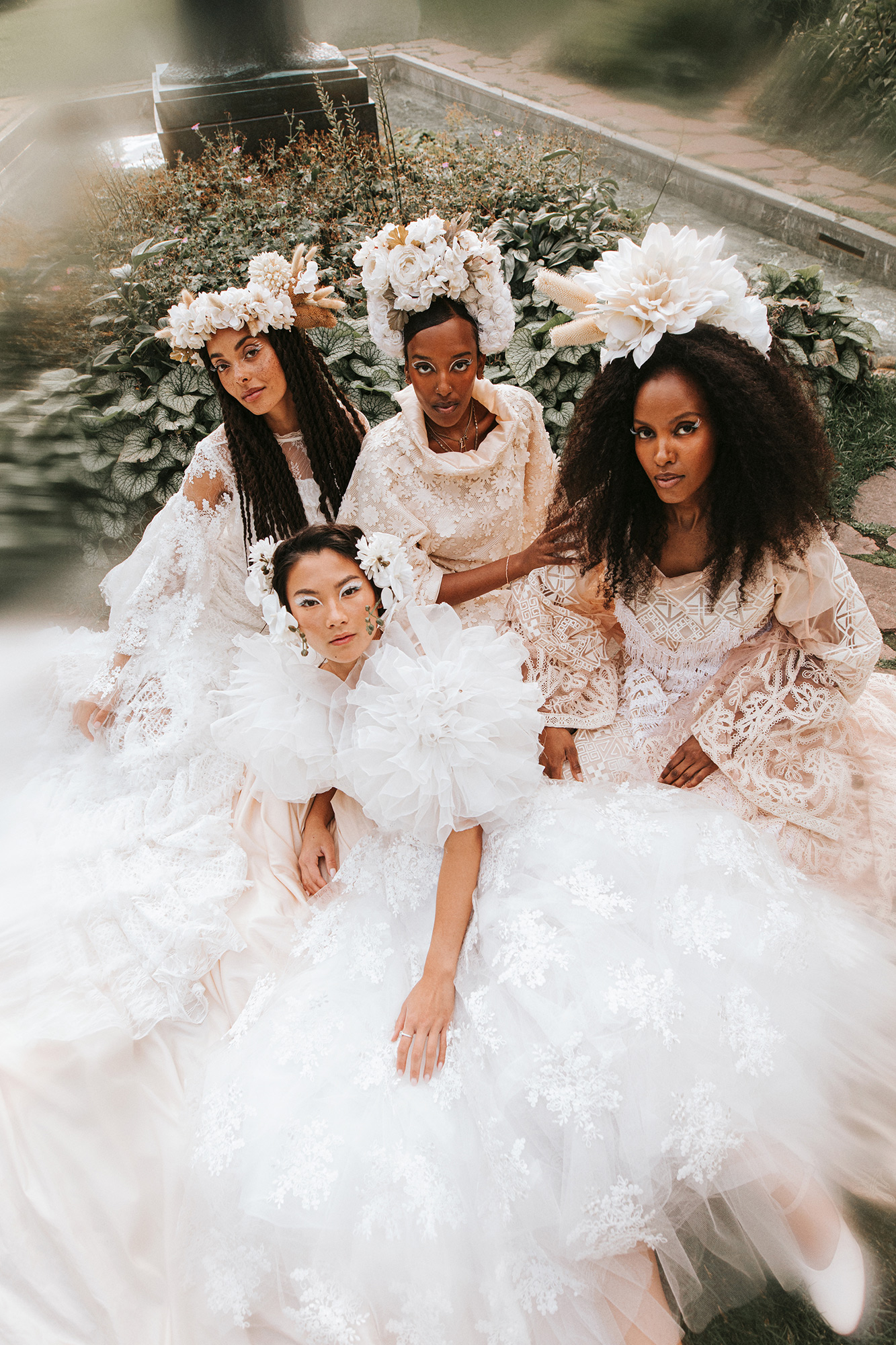
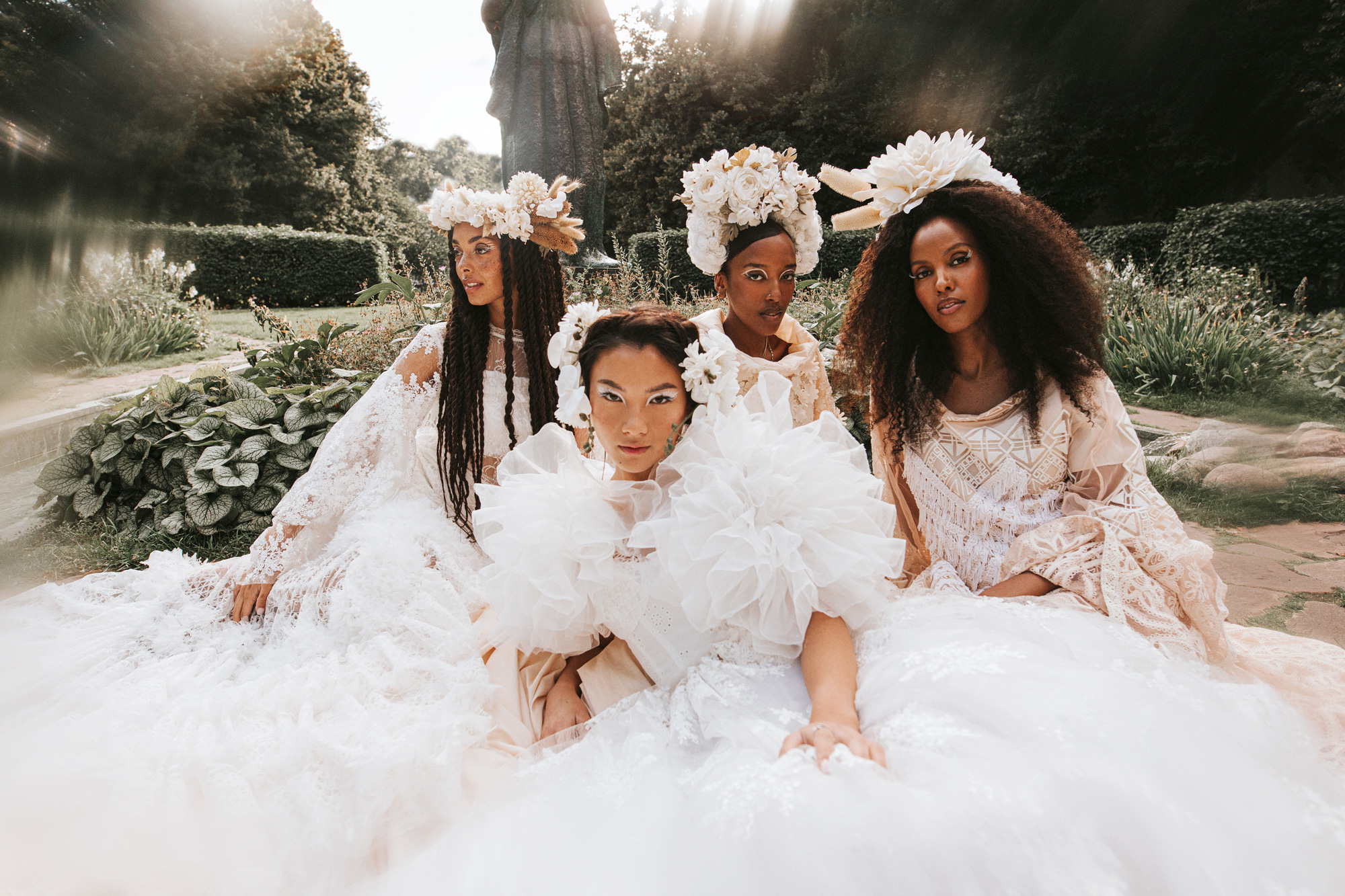
Anybody’s Red Carpet
Wonderful. Who are your clients now? Who would be your perfect client if you want them to reflect your ideals?
I don’t have a perfect client. There have been many actresses who wear my dresses on the red carpet. And now, after the Nobel banquet, more politicians, writers, and people from all walks of life are becoming interested. I find it fun to have people who usually are not so open to wearing this crazy stuff actually trying it out. And the rental concept gives this opportunity as well. I know myself, if I’m going to spend a lot of money to buy one piece, it would probably be black and very classic because I want to be able to use it for a long time and for many occasions. So when you’re renting, it gives you a different opportunity, and you can go crazy in different ways.
So I hope that more people are willing to be more fun and crazy, especially in Sweden, where we are known for being minimalistic. And it’s funny that you asked who are my ideal clients. For some of those clients who reach out to me, they first say, “You know, I’m not a celebrity, but I hope you want to dress me anyway.” And I always tell them, “You know what, I treat everyone the same.”
I don’t give anything to the press for free because it doesn’t matter if you are, I don’t know… Beyonce and Rihanna, or you’re a school teacher, you are equal in my eyes, and that’s why I’m doing what I’m doing. I think it’s insane that someone who has a lot of money, who’s famous, can get things for free because they’re famous, while someone else saves up money to afford me. That really pains me. So for me, I don’t care who you are. It’s the same treatment for everybody.
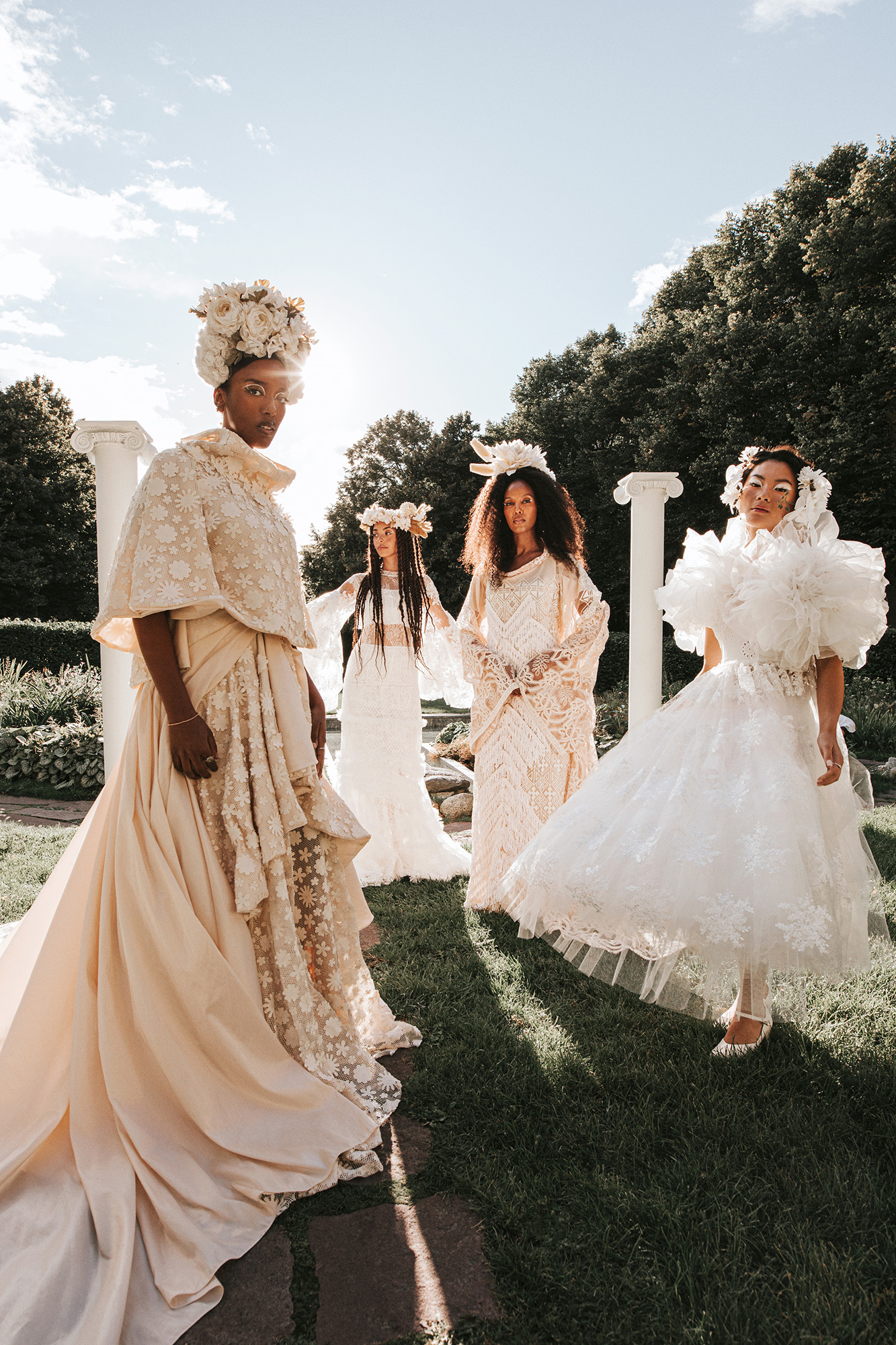
Success and Usefulness
I love that. So, what is success for you?
That’s also a very fun question because I often get that from fashion students or young people trying to find a path overall. They always ask, “How can I become successful?” That’s the wrong question to ask. It’s like putting a destination in the GPS when you want to go somewhere without knowing where you want to go and have no idea where to start. And even if you end up somewhere very successful in the eyes of society, you might not be doing something you’re passionate about.
The question that helped me is, “How can I be useful? How can I serve society, and how can I contribute to something for someone else? And you do that by using your passion and what you’re good at. That, for me, was the perfect combination. I get to do what I love, and I can help someone on the way and make life easier, better, or more fun. It doesn’t matter if I appear on T.V. or in magazines or if nobody knows who I am. If, for everything I touch, I manage to leave it better than I found it, then I feel successful. And I’m incredibly grateful for everything I got so far. The ability to meet all these people… work with all these people, and simply work with what I love to do. I’m the luckiest person alive.
Two days ago I was at a conference here in Paris. Three hours in French… I didn’t understand a word. But there was one woman, a survivor, who lived through a concentration camp where she was producing many of those products hanging in our closets. And meeting her was a more significant experience than meeting any celebrity or famous rich person because her strength was so incredible.
She told me how much money those big brands make and how they force 13-14-year-old girls in the camps to work. And just watching someone going through those hardships and being able to come out the other side of it. Then being strong enough to share their own story to help others. That was incredible for me, and that’s what I also want to do with my work.
Sorry for the super long answer.
Pushing Buttons
No, it’s a great answer, and I appreciate you for that. I’m sure you got some adverse reactions when you did your first presentation and brought up the camps and the Uyghur issue. What kind of blowback did you get, and how did you handle that?
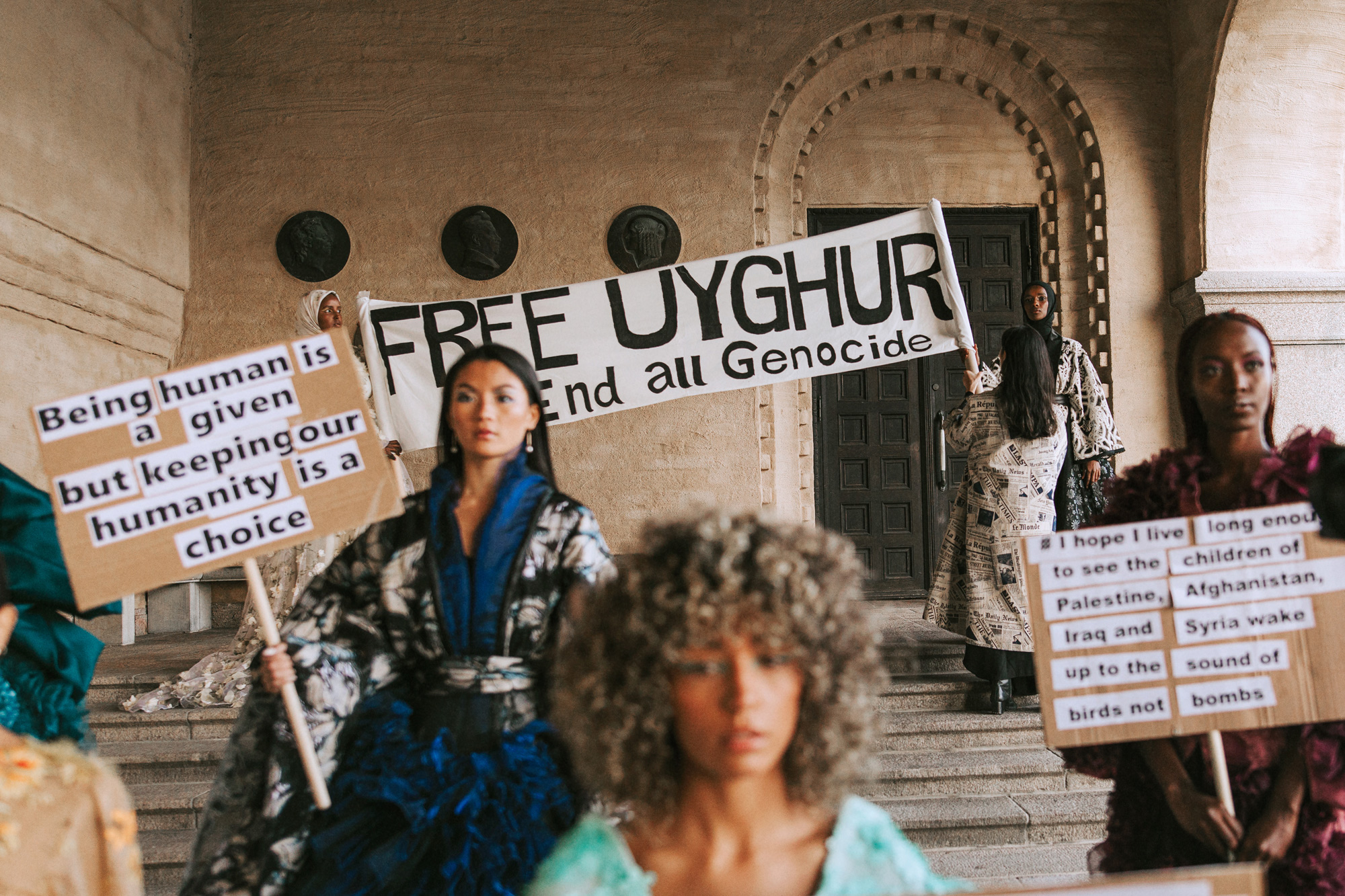
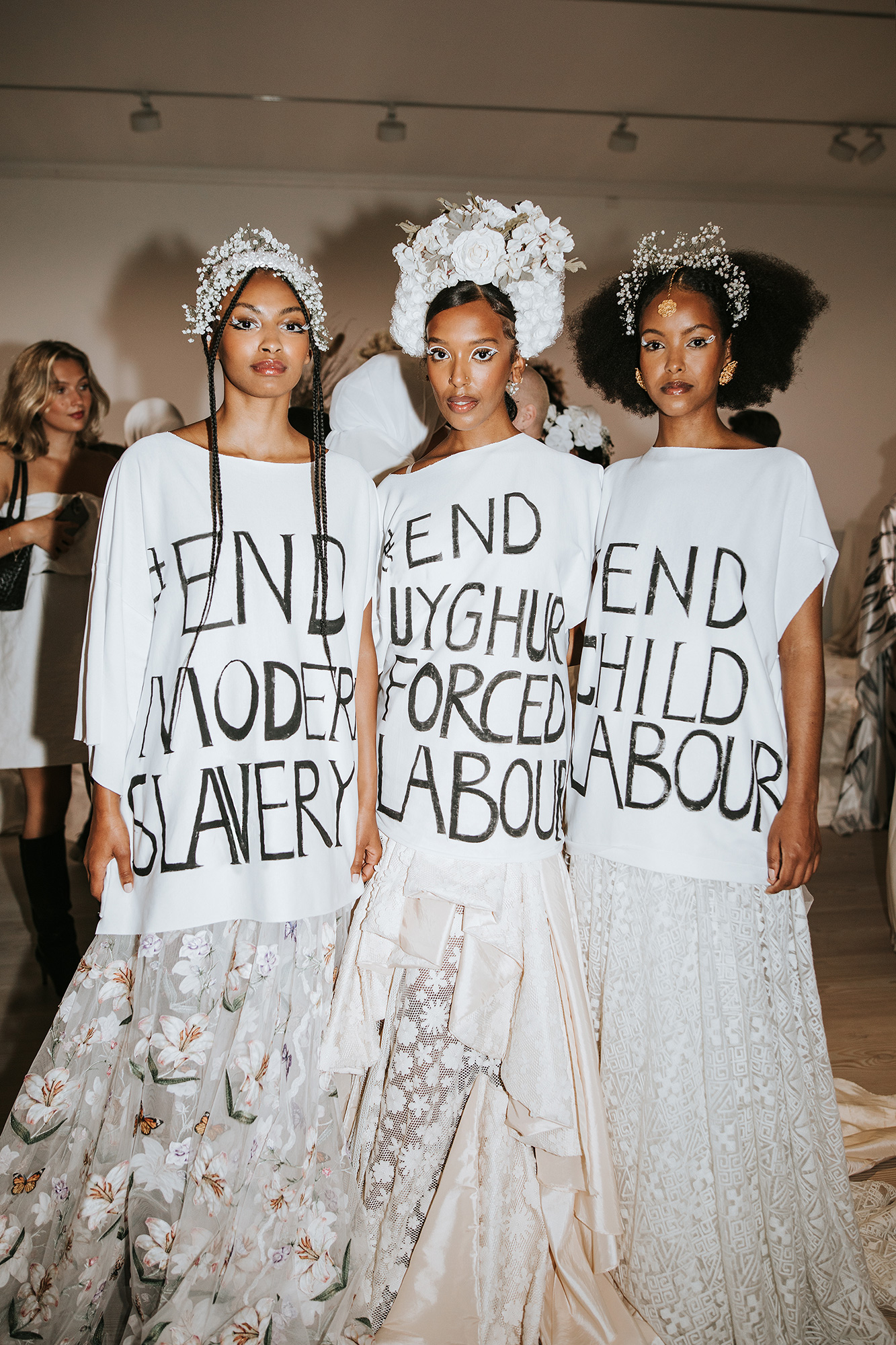
I went viral in China with Global Times. And apparently, so many Chinese people were angry enough that they even called Chinese Vogue to yell at me without understanding that Chinese Vogue and Vogue Scandinavia have nothing to do with each other. The Swedish government quickly detected the backlash, and that I was boycotted by the government’s magazine in China. So they called me to say hi and to ensure my team and I was okay. Because the other people who spoke up, who are Swedish, ended up in jail.
I was like, “Oh shit!” I had no idea.
At some point, I got scared, of course. I received some really weird phone calls that scared the shit out of me and hung up directly. But ever since meeting the Uyghurs and having conversations with them… I remember a woman who wrote me on Instagram. She sent a picture of a super cute little girl and said, “Hi, this is my five-year-old daughter. Her father is in one of the camps, and thank you so much for what you’re doing. I’m too tired to fight but thank you for doing that for us.” I also receive tons of love from the community- one person said, “this is the first time we’ve seen humanity in seven years.”
Like, that outweighs everything else. I know that whatever I’m doing, of course, I’m scared. It’s not fun to get threats from one of the most powerful governments in the world. Especially when it’s your own country. I will never be able to return to my homeland, but I know what I’m doing is the right thing. It’s the only right thing for me to do. Seeing that what I did creates a little hope makes everything fine for me. There’s nothing I can complain about. And I will continue to do whatever it takes until those camps end.
That’s incredibly brave!
Advocacy and Defending Human Rights
What’s your latest collection, and what story do you want to tell with it?
Okay, so the upcoming fashion show will be in the European Parliament in Brussels. So it’s like the first fashion show ever held there. The funny part is I got selected as a Sakharov fellow [for human rights defenders] in the European Parliament last summer. At the same time, the E.U. came out with a proposal to end forced labor worldwide. So, how come we don’t already have that? It’s like literally ending slavery all over again. The fact that we still need to convince people and have that law…is insane!
So what I’ve been doing since I got back from the Parliament is to use my platform to get people involved and make them understand how important this is. And the goal of my fashion show in the Parliament is to support that cause and make the fashion industry finally wake up and understand that you truly can’t continue exploiting human resources in the way you’ve been doing. It’s the biggest greenwashing ever when you’re talking about sustainability but is still profiting from human slavery.
I hope this will be my last political fashion show. I would love to focus on the fun, fashion part, but I must do whatever I can as long as it’s like this.
Thank you for having such a strong sense of ethics. Makes me love you even more.
I’m trying. I’m not immune to being corrupted and wrong, so I hope the people around me who know me for real can be the first to slap me if I ever become ignorant and a bad human being. Because everyone can make mistakes, and I make tons of them. But I’m quick to admit them and to check myself as much as possible. I always ask my friends to do that for me when I cannot.
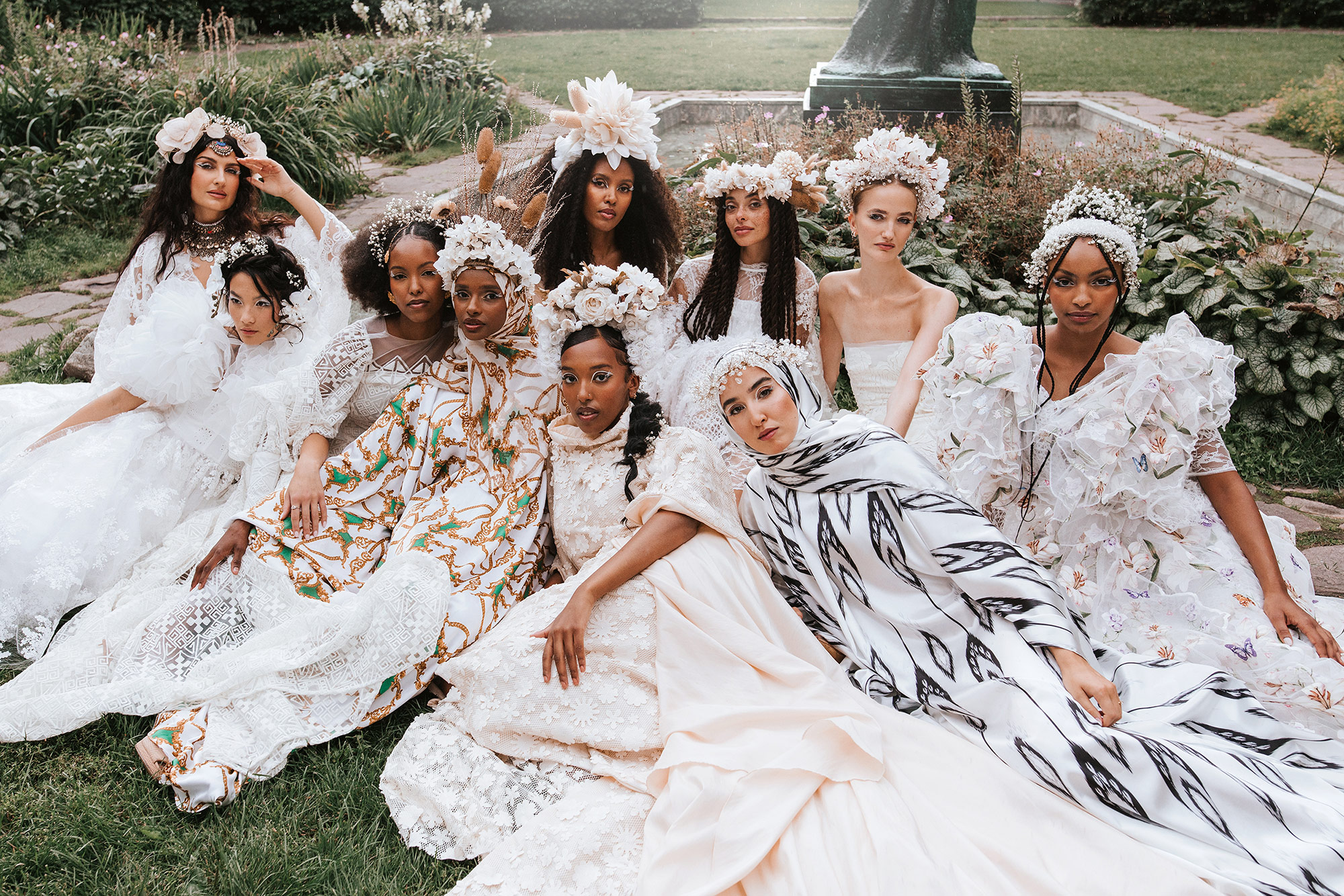
One final question. Who mentors you, and who do you mentor?
That’s an excellent question, but it’s really hard… I have so many mentors. I have amazing friends who inspire and support me. Getting to know them and their stories teaches me a lot. But I don’t see myself as a mentor in that way. I don’t have a specific person that I am mentoring.
When it comes to human rights work, definitely my friend Jewher Ilham. She’s the daughter of the famous Uyghur economist and scholar Ilham Tohti, a seven-time Nobel Peace Prize nominee who is in prison in China today. Her story always teaches me so much. She came to the U.S. as a refugee. She jumped on a plane the day her father got taken. And she didn’t know a word of English, but she ended up in front of the White House and the E.U. and like everywhere to fight for her people. Beyond the public eye, she’s a fantastic dancer and artist, but she gave up all that to fight for her people.
If I’m at all able to work with my passion, I owe that to her somehow, like she gave up all that to fight for her people. So the least I can do is try to use my platform to create a positive change.
